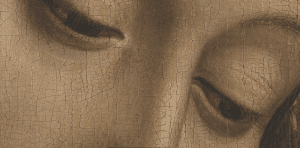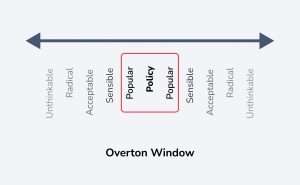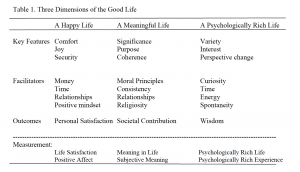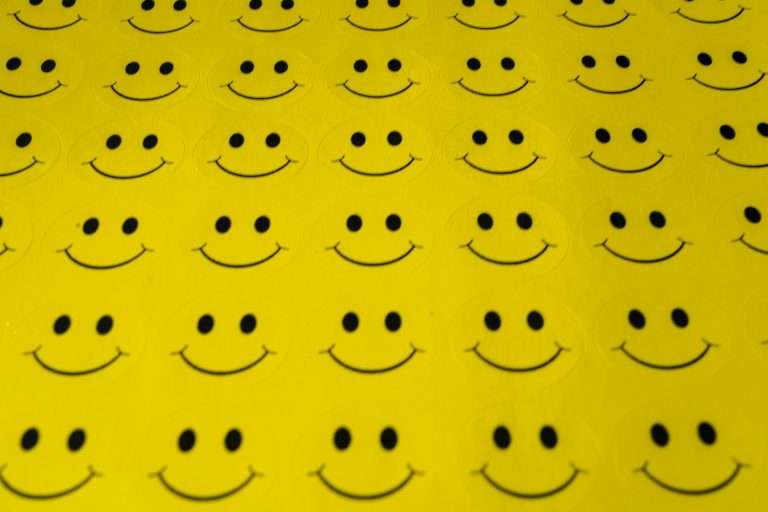Here’s a collection of what I learned in 2022: 24 amazing things that caught my attention this year. I chose them based on one simple criterion: all of them made me go “wow, wait a sec…” and many have inspired deeper research into them.
I tried to divide them into categories for a more organized reading experience.
Enjoy!
Art
Leonardo’s Annunciation

This painting is perhaps among my favorites of Leonardo. It dates back to 1472 and depicts Angel Gabriel telling Virgin Mary that she’ll be the mother of Christ. I’ve come to appreciate it more when I read his biography.
Context. It’s one of the paintings Leonardo created when working in Andrea del Verrocchio’s studio, as a young artist (20 years old) learning about his craft. It’s not exactly a masterpiece. In fact, it’s even been debated whether he’s the author of it, given several imperfections that prompted some to argue this can’t possibly be the masterful hand of Leonardo.1Leonardo da Vinci, Walter Isaacson However, now experts are sure this is his work.
What makes it special? The Annunciation is valuable not so much because of its aesthetic rigor, but because it offers a window into the artist Leonardo was at that time: still learning, his technique not yet mature. Among the flaws of the painting there’s Mary’s oddly elongated right hand, the awkward proportion of the wall and the rest of the scene, and the drapery on her knees that looks as if she has 3 of them.
Many know Leonardo for his exquisite use of light & shadow, playing with perspective and excruciating attention to detail. But it goes to show that he wasn’t born with a divine gift. He had to work at it just like the rest of us. His early work is a testament of this. It shows a clumsy hand, an undeveloped eye and the mistakes of a beginner. However, we can glimpse his genius even in this “problematic” painting.
Artist’s studio

Painting by Willem van Haecht (1630)
Willem van Haecht, born in Belgium, whose father was the first teacher of Rubens, is best known for his pictures of art galleries. This one above is my favorite. What fascinated me the most was the depth and richness of this piece, as well as its balance between dynamism and stillness. The longer you look, the more details you can make out. It froze in time a painter’s studio in the 17th century, with its artists, muses and artworks. If looking at this painting doesn’t make you hungry for art and beauty, I don’t know what will.
Craquelure

Craquelure is the fancy name for the fine cracks you can find on old paintings, due to age, mishandling or exposure to other damaging elements.
An art conservator conducted a rigorous study of different patterns of cracks and came up with a system for classifying paintings based on it. Yes, there’s a science even to this. Among the clues he looks for, there’s: the direction of the cracks, the shape of the lines, the shape of the “islands” they form, their orderliness, etc.2How to use your eyes, James Elkins
Craquelure can even offer insights into the age of the painting, its origin (location) or the materials used.
The method behind the madness

Jackson Pollock is renowned for his abstract, erratic drip paintings. To the untrained eye, it might look like there’s really no thought behind his technique, prompting people to naively say “I could have painted that!”
However, when experts analyzed some of his artworks, they revealed something astonishing. Not only were his methods thought out, but he even created a grid-like structure to guide him in the creative process. Like a map, drawn underneath the paint, used to navigate and inform his next moves.
This made me think of how often we belittle creations that look either incredibly simple (like Barnett Newman’s Onement V) or haphazardly put together (like Pollock’s paintings), that we arrogantly assume it must have been “easy” to make them, or that perhaps we could have done a better job.
Concepts
The law of category
If you can’t be first in a category, set up a category to be first in. It’s unlikely you’ll dominate a market where you’re “the new guy,” because people look for authority and trust. So build them by creating a super specific niche in which you’re seen as the go-to individual/brand. The Internet rewards specificity.
Overton Window

It refers to the range of policies politically acceptable to the mainstream population at a given time. Also known as “the window of discourse.”
On any given idea, we’re constrained in how we can approach it because there are fringe views that won’t be accepted, no matter how much sense they make. Although this window (named after policy analyst Joseph Overton) is mainly used in politics, it can certainly be encountered in other areas of life, whenever the “socially accepted” view has already been established.
I’m wondering over and over lately about the ideas that won’t even be uttered, because we know there’s deep resistance to them. I’d like to know what everyone’s thinking but they’re too afraid to say it out loud.
Kayfabe
This concept came from the world of wrestling, and it refers to the suspension of disbelief. All the rivalries and dramas in professional wrestling are fake, but kayfabe is the act of pretending they’re actually real. So far so good. But the mindfuck begins when a wrestler breaks kayfabe (deviating from the script) to get “real,” when in fact it turns out that moment was itself scripted. So we’re quickly entering the territory where reality and fabrication are nested within each other like Matryoshka dolls, leaving us unable to separate fact from fiction.
We can encounter kayfabe in other places, such as other forms of entertainment (Late Night Shows) or even politics. I remember the ongoing “feud” between Matt Damon and Late show host Jimmy Kimmel.
If you’re interested in diving deeper, I highly recommend you watch this video. It’s both entertaining and illuminating.
Bullshit
You may have heard someone remark, or perhaps even said it yourself, that we’re surrounded by bullshit. We’re basically swimming in it. But what is bullshit, anyway? It’s not mere falsity. When a politician is delivering a speech that you feel evaded the important issues, it can be the case that he didn’t tell any lies.
A bullshitter and a liar are not the same. The liar knows the truth and is trying to convince you that his version of events is actually true. Someone who bullshits you, on the other hand, doesn’t even concern himself with what’s true. All he cares about is getting you to forget that there’s any truth out there, by distracting your attention with salient facts. Like a magician. He wants you to act in a certain way, irrespective of what you believe.
Source: On Bullshit by philosopher Harry Frankfurt
Einstellug effect
This describes the predisposition people have to solve problems using a method that they know works, even though there are other ways, more suitable for the job. “When you have a hammer, everything looks like a nail.” It stems from a mechanized state of the mind, in which we stop looking for new solutions and apply the same fix to all our situations. A general-purpose solution looks appealing, but what you gain in efficiency, you lose in resiliency.
Energetic container

I encountered this idea in Catherine Andrews’ newsletter. Here’s how she defines it:
Your energetic container is your ability to hold space for attention, your own emotions, focus of others, receiving of both praise and criticism, receiving of desires (emotional desires and physical, material desires) and more.
It’s about how much you can take in: either good or bad, and the “space” you have left to function as a normal human being. We all know someone who receives a bad comment and it takes all their mental real estate, leaving them unable to focus on anything else.
I’ve been thinking about this a lot lately, and I’m trying to be more mindful of not letting some things take up all the space in my mind.
(Note: I’m not a fan of the name, because I think “energetic” is a word that has been abused to a great extent and that’s been unfortunately tied to some dubious claims about the nature of reality. And usually it’s nothing more than pseudoscience. But I wanted to present the concept as I’ve learned about it. I don’t claim this has any metaphysical implications; I view it simply as a good way to talk about one’s ability to “hold space” for all the emotions and thoughts present.)
Metaphors
Metaphor is an integral part of how we relate to the world around us. It isn’t merely a vehicle of language that allows us to get embellish our speech. It’s at the core of how we think and act. It permeates all activities. In fact, it’s so ubiquitous that most of us don’t even notice how much we rely on metaphor.
There are different kinds of metaphors (structural, orientation, ontological) and in many cases they’re coherent with each other, meaning they form a complex structure that makes sense with the experiences we have as humans. These metaphors emerge from our spatial, cultural and physical knowledge. For example, an orientation metaphor like “Health is up” can be seen in expressions like “She’s at the peak of her health,” while concepts of illness are constructed on the “Sickness is down” metaphor: “He came down with the flu.”
Source: Metaphors We Live By
3 Lives

Source: Social Psychologist Erin Westgate
Read more: 7 concepts to grasp the fullness of life
Language
Phrónēsis
Greek for practical wisdom. It’s a type of intelligence that lets you put principles into action. Socrates proposes that phrónēsis is a necessary condition for all virtue.
Prosochē
Prosoche, translated from Greek as attention, is a central tenet of Stoicism. If practiced rigorously, it allows the individual to maintain a “constant tension of the spirit.”3Philosophy as a Way of Life, Pierre Hadot This attention allows us to remember what we do, how we respond to situations, but above all, what we are, our place in the universe.
Ataraxia
Greek for equanimity. This philosophical concept is usually found in the works of Epicurus and the Stoics. For the Epicureans, ataraxia is deeply bound with how we relate to our pleasures or desires. They argue we need to train ourselves to distinguish between what’s important vs what’s merely salient. Ataraxia is seen as a key component in achieving happiness.
Akraxia
Do you know that feeling when you know what you need to do, but still fail to take action? If so, then you’ve experienced akraxia. (Not to be confused with Ataraxia.) This, too, is a Greek term. It’s roughly translated as “weakness” or “lacking command.” It stands in opposition to Enkrateia, Greek for “power over yourself.”
The phenomenon of Akraxia has been debated and investigated by philosophers as far back as Socrates. The question still remains: why do we act against your better judgement?
Quotes
“Mindfulness advocates, perhaps unwittingly, are providing support for the status quo. Rather than discussing how attention is monetized and manipulated by corporations such as Google, Facebook, Twitter and Apple, they locate the crisis in our minds. It is not the nature of the capitalist system that is inherently problematic; rather, it is the failure of individuals to be mindful and resilient in a precarious and uncertain economy. Then they sell us solutions that make us contented mindful capitalists.” – Ronald Purser in McMindfulness (If I could, I’d quote the whole book, highly recommend it)
“We don’t do propaganda so you believe something. We do it so you believe nothing. And more importantly, do nothing.” – @DarthPutinKGB (Here I am quoting a satirized Russian dictator, but I think even he would agree.)
“Rule of thumb: if you think something is clever and sophisticated beware – it is probably self-indulgence.” – Don Norman in The Design of Everyday Things
“If the path before you looks clear, you’re probably on someone else’s.” – Joseph Campbell
Life Advice
Early stages pitching
If you’re planning on pitching a project or idea to investors, try not to go straight to the ones you desperately want an “yes” from. If it’s the first time doing this, you may be less than perfect. So aim to practice on 5 of “less important” people, to exercise your presentation and perhaps even gain some feedback. Only after you’re confident enough can you approach the big guys.
Celebrate your quirks
Don’t be afraid of the things that make you you. The little odd details that others might find strange: your unique interests, tastes, even some minor flaws. They’re part of your “brand.” Celebrate them and capitalize on them.
To quote Tyrion Lannister, from Game of Thrones:
“Never forget what you are, the rest of the world will not. Wear it like armor and it can never be used to hurt you.”
Mental Models
Clustering illusion
Humans are pattern finding machines. And science is a way of testing these patterns, to see if they’re “real.” However, we’re so biased for explaining patterns as evidence of our hypothesis, that we may misinterpret results that show a cluster of data as non-random. In our brains, patterns = “there must be something here,” and we try to find it, even when there is just a coincidence.
First mover advantage
Acting quickly and being the first in a category (remember: The law of category) can have its perks. The first person or company to capitalize on an idea can see disproportional rewards.
Read more: 17 Powerful Mental Models Analyzed
Footnotes
- 1Leonardo da Vinci, Walter Isaacson
- 2How to use your eyes, James Elkins
- 3Philosophy as a Way of Life, Pierre Hadot



